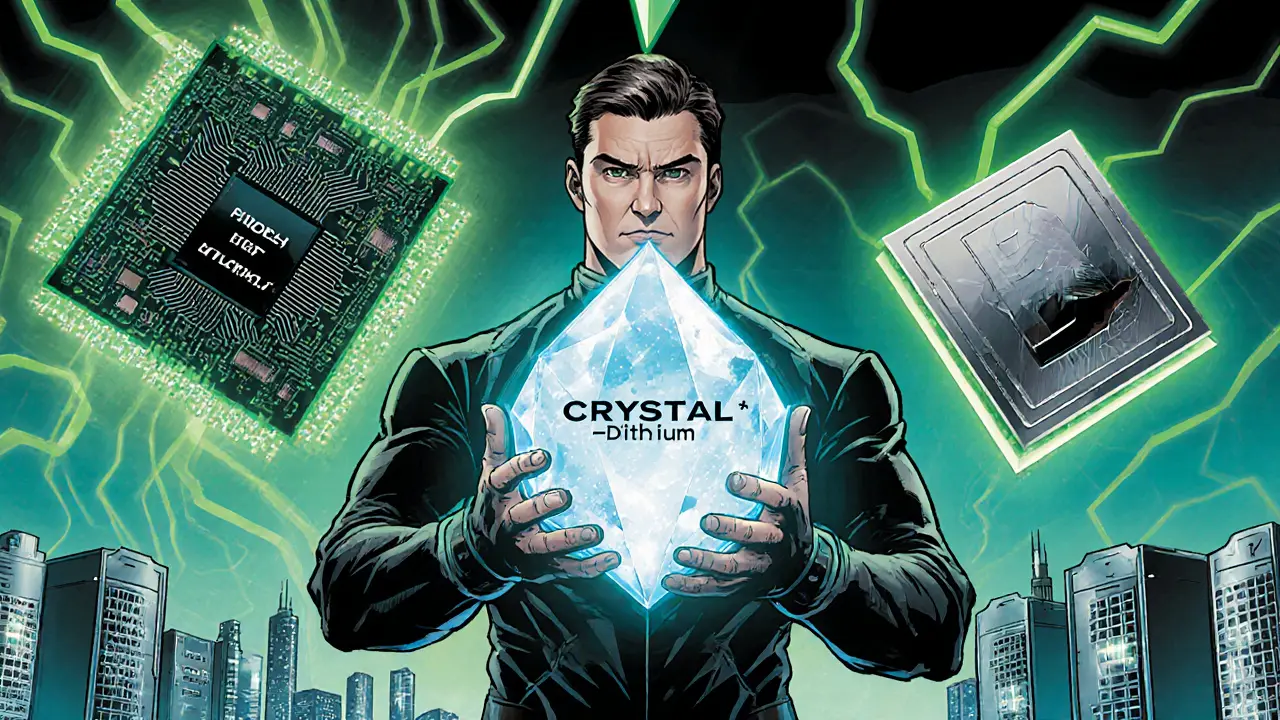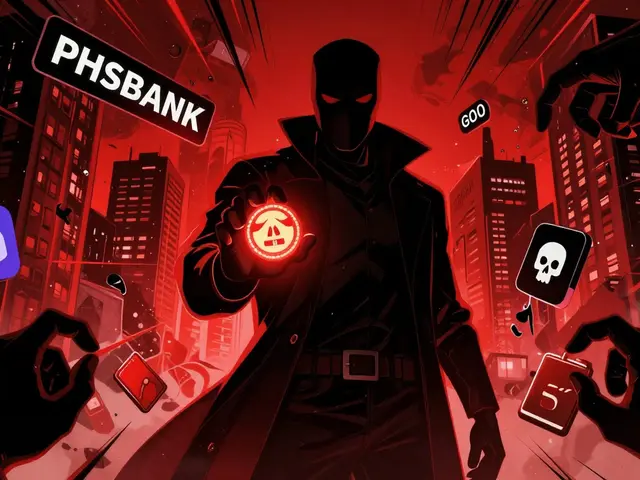Blockchain Meets Quantum Computing: Future Proofing in the Quantum Era
Quantum computers are inching closer to breaking the cryptographic foundations that keep blockchains secure. At the same time, the same technology can power brand‑new consensus models that could cut energy use dramatically. This clash creates a race: either upgrade today’s chains with post-quantum blockchain defenses or build entirely quantum‑native networks. Below we unpack the technical threats, emerging solutions, and practical steps you can take right now.
Why Quantum Computing Matters for Blockchain
Quantum Computing is a computing paradigm that leverages qubits, superposition, and entanglement to solve certain mathematical problems exponentially faster than classical machines. The most relevant problem for blockchains is integer factorisation and discrete logarithms, the bedrock of RSA and Elliptic Curve Cryptography (ECC). Peter Shor’s 1994 algorithm proves that a sufficiently large, error‑corrected quantum processor can solve these problems in polynomial time, effectively rendering current public‑key schemes useless.
Federal Reserve analysts Jillian Mascelli and Megan Rodden warned in a 2025 study that attackers could already be harvesting encrypted blockchain data for a "harvest‑now, decrypt‑later" (HNDL) attack. By the time quantum hardware reaches the required scale-estimates range from 2040 to 2045-billions of dollars of crypto assets could be exposed.
Current Quantum Capabilities and Roadmaps
Today’s quantum machines are still primitive. IBM’s 2025 Nighthawk processor can run about 5,000 quantum gates before decoherence erases the calculation. Their announced Stling system (2029) aims for 100million gates, a 20,000× jump. By 2033 IBM expects BlueJ with 2,000 logical qubits, roughly ten times more powerful than Stling.
Even with these advances, Dr. Jay Gambetta (IBM) estimates that breaking Bitcoin’s ECC would need at least 10million physical qubits with very low error rates-unlikely before 2040. Nonetheless, the risk is real enough that regulators in the EU have set a mandatory post‑quantum migration deadline: start by 2026, finish by 2030.
Post‑Quantum Cryptography (PQC) Standards
CRYSTALS‑Kyber is the NIST‑selected key‑encapsulation mechanism for general encryption, while CRYSTALS‑Dilithium won for digital signatures. Both are lattice‑based schemes, meaning they rely on the hardness of problems in high‑dimensional vector spaces-problems that remain infeasible for quantum attacks.
Adopting these standards in blockchain is not a simple swap. Kyber signatures are about 2.3× larger than the current ECDSA signatures, increasing block size and bandwidth needs. Moreover, many blockchain clients still lack native support, requiring hybrid approaches during transition periods.

Quantum‑Resistant Consensus Mechanisms
The D‑Wave prototype introduced a novel "Proof of Quantum Work" (PoQ) consensus. Instead of hashing puzzles that consume megawatts, PoQ asks miners to perform a quantum circuit that an classical computer cannot simulate efficiently. The March2025 arXiv paper showed 75% mining efficiency across four geographically distributed quantum processors, hinting at a future where security and energy consumption improve together.
While PoQ is promising, it also creates a dependency on quantum hardware availability-a hurdle for public blockchains that aim for decentralisation across anyone with a laptop. Permissioned, enterprise chains can more easily provision quantum nodes, making them the first adopters of quantum‑native consensus.
Migration Pathways: How Blockchains Can Harden Their Future
There are three practical strategies developers can follow:
- Hybrid Cryptography: Run both classical (ECDSA) and post‑quantum (Dilithium) signature verification during a transition window. This maintains compatibility with legacy wallets while gradually moving users to PQC‑enabled clients.
- Layer‑2 PQC Wrappers: Off‑load transaction signing to a separate layer that uses PQC keys, keeping the base layer unchanged. Projects like the Quantum Resistant Ledger (QRL) already use such wrappers.
- Quantum‑Native Chains: Build new networks from the ground up that require quantum proof‑of‑work or lattice‑based verification. D‑Wave’s prototype serves as a proof‑of‑concept.
Enterprise solutions are moving fastest. IBM announced in February2025 that its Quantum Safe Blockchain service will support Kyber/Dilithium by Q42025. Hyperledger Fabric’s working group now ships a PQC module that can be toggled on demand.
Cost, Timeline, and Community Readiness
According to Bain’s 2025 analysis, migrating a major public blockchain could cost $50M-$200M and require 18-24months of development and testing. The learning curve is steep: Coursera’s "Quantum‑Resistant Blockchain Development" course saw a 42% completion rate among 8,500 enrollees, indicating many developers still struggle with the math.
Survey data paints a mixed picture. A Reddit poll in March2025 found 68% of Ethereum developers consider quantum risk "important but not urgent," while a ConsenSys survey of 350 enterprise developers reported 73% ranking it among their top‑five security priorities. The gap shows where regulation can push adoption faster-EU financial institutions already have 78% planning quantum migration, versus 32% in the U.S.

What the Next 10 Years Might Look Like
By 2030, we can expect:
- Permissioned blockchains (e.g., Hyperledger, Corda) largely migrated to PQC, complying with EU and U.S. mandates.
- Public chains like Ethereum integrating lattice‑based signatures in the Verkle Tree upgrade (target 2027), still requiring hard forks but moving forward.
- Early quantum‑native prototypes gaining traction in niche domains-high‑frequency trading, inter‑bank settlement-where quantum hardware can be provisioned centrally.
- Continued investment: global funding for quantum‑resistant tech topped $1.2B in Q12025, with a steady rise expected.
For most developers, the message is clear: start experimenting now, build hybrid solutions, and keep an eye on the regulatory calendar. The "10‑15 year window" cited by Dr. Scott Aaronson offers both a warning and a gift of time-use it wisely.
Key Takeaways
- Quantum computers threaten ECC and RSA; Shor’s algorithm is the primary risk.
- NIST‑approved PQC schemes (CRYSTALS‑Kyber, CRYSTALS‑Dilithium) are the de‑facto standards for migration.
- Enterprise blockchains are leading the migration; public chains face coordination challenges.
- Quantum‑native consensus like PoQ could solve both security and energy problems but depends on hardware availability.
- Regulatory deadlines (EU 2026‑2030, U.S. NSM‑10 by 2035) are the biggest drivers of adoption.
| Attribute | Current (ECC/ECDSA) | Post‑Quantum (CRYSTALS‑Dilithium) |
|---|---|---|
| Security Basis | Elliptic Curve Discrete Logarithm Problem | Lattice‑based Shortest Vector Problem |
| Key Size | 256‑bit (public), 32‑byte (private) | 2,048‑bit public, 3,072‑bit private |
| Signature Size | 64‑byte (ECDSA) | ~2,500‑byte (Dilithium) |
| Verification Speed | Microseconds on typical CPUs | ~10× slower, still sub‑millisecond |
| Quantum Resistance | Vulnerable to Shor’s algorithm | Resistant to known quantum attacks |
Frequently Asked Questions
When will quantum computers actually break Bitcoin?
Most experts agree a 10‑million‑qubit, error‑corrected machine is needed, which likely won’t appear before 2040. However, "harvest‑now, decrypt‑later" attacks mean the risk starts now for historical data.
Can I upgrade my existing Ethereum contracts to post‑quantum signatures?
Directly swapping signatures isn’t possible without a hard fork. The common path is a hybrid verification phase where both ECDSA and Dilithium signatures are accepted, then deprecate ECDSA after sufficient user migration.
What is "Proof of Quantum Work" and how does it differ from PoW?
PoQ replaces the hash‑puzzle with a quantum circuit that’s easy for a quantum processor but infeasible for classical hardware. The result is a dramatically lower energy footprint and a built‑in quantum‑resistance because only quantum nodes can solve the puzzle.
Do quantum‑native blockchains eliminate the need for PQC?
In theory, a quantum‑native chain’s consensus already requires quantum computation, so classical cryptography isn’t exposed. In practice, most implementations still need signatures for transaction authentication, so PQC remains relevant.
How much will it cost to migrate a public blockchain to PQC?
Bain’s 2025 analysis estimates $50M-$200M for a full migration, depending on network size, developer resources, and testing depth. The timeline is typically 18-24months.






15 Comments
Jordan Collins
October 15 2025Quantum‑ready blockchains will soon face hard regulatory deadlines, so developers should start planning migrations now.
Andrew Mc Adam
October 15 2025I get why many teams feel stuck between the old ECC world and the shiny new lattice‑based schemes.
The practical way forward is to set up a hybrid verification layer that accepts both ECDSA and Dilithium signatures.
You can deploy a fork that checks the classic signature first and, if it fails, falls back to the post‑quantum check.
This gives users time to upgrade their wallets without forcing an immediate hard fork that could split the chain.
From a networking perspective, the extra 2‑3 kilobytes per transaction are manageable on most modern peers.
Node operators just need to add the new verification code and bump the protocol version.
In my own testnet, we saw only a 7 % increase in block propagation time after enabling the hybrid mode.
The biggest hurdle remains the key‑generation step, because Dilithium keys are huge and many hardware wallets can’t store them yet.
A workaround is to keep the legacy private key on a secure element and use a separate post‑quantum key for signing, then aggregate the signatures.
This approach also sidesteps the “harvest‑now, decrypt‑later” risk by never exposing a single vulnerable key.
Regulators are already drafting guidelines that will give a grace period for hybrid deployments before the full migration deadline.
So if you start integrating the lattice libraries now, you’ll be well inside the compliance window.
Don’t forget to run extensive fuzz testing, because mixing two signature schemes can open subtle attack surfaces.
And keep an eye on the NIST PQC competition updates – they may tweak parameters that affect performance.
Bottom line: hybrid cryptography lets you future‑proof today without pulling the rug out from under your users.
Shrey Mishra
October 15 2025The allure of quantum‑native chains often masks the practical bottlenecks that current ecosystems face.
Most miners still run on commodity CPUs, and the availability of error‑corrected quantum processors is years away.
Relying on a technology that only a handful of labs can provide creates a centralisation risk opposite to the original ethos.
Moreover, the transition to lattice‑based signatures will inflate block sizes, stressing bandwidth for many nodes.
Therefore, a cautious, incremental upgrade path remains the most realistic security strategy.
Ken Lumberg
October 15 2025It is simply negligent to postpone migration while regulators hammer down concrete deadlines.
If the community values decentralisation, it must also value compliance and protect users' assets.
Waiting for perfect quantum hardware is a fantasy that jeopardises billions of dollars.
Hence, we should enforce hybrid PQC now and treat delay as a breach of fiduciary duty.
Blue Delight Consultant
October 15 2025The tension between innovation and security mirrors the age‑old philosophical debate of progress versus precaution.
In seeking to future‑proof blockchains, we must balance the promise of quantum efficiency with the burden of larger signatures.
A measured approach, akin to a Socratic dialogue, invites stakeholders to question assumptions before committing to wholesale change.
One practical step is to pilot PQC modules on testnets where the impact on latency can be observed without end‑user risk.
Such pilots also generate empirical data that can inform regulatory submissions.
Ultimately, thoughtful iteration outpaces reckless leaps.
Wayne Sternberger
October 15 2025I agree that pilots are essential before any mainnet rollout.
Our team recently integrated a Dilithium verification library into a private Hyperledger instance.
The only issue we faced was the increased memmory footprint, which required a modest node upgrade.
But the security gains were evident, and the transition was smooth once we updated the configuration.
I recommend other developers start with similar sandbox environments to build confidence.
Gautam Negi
October 15 2025Everyone is shouting about quantum threats as if they’re imminent, yet the actual hardware timelines are still speculative.
It’s almost comical how many whitepapers propose PoQ without addressing the accessibility problem.
If only a few data centers can afford quantum chips, the promised decentralisation evaporates.
Thus, betting the entire ecosystem on quantum‑native consensus may be a gamble worth reconsidering.
Shauna Maher
October 15 2025Don’t be fooled by the corporate PR that paints quantum migration as a benign upgrade.
Behind the scenes, powerful interests are pushing PQC standards that lock out independent developers.
They want control over the new cryptographic primitives, ensuring only their sanctioned hardware can participate.
This is a classic case of tech elites shaping the future to maintain dominance.
Stay vigilant and demand open‑source implementations now.
Kyla MacLaren
October 15 2025I think the community could benefit from a shared repository of PQC integration scripts.
Having a common codebase would reduce duplicated effort and make it easier for newcomers to contribute.
Let’s coordinate on GitHub and set up a weekly sync to track progress.
Linda Campbell
October 15 2025The United States must not cede cryptographic leadership to foreign entities.
Adopting post‑quantum standards that are developed domestically safeguards national security.
Any reliance on overseas quantum hardware introduces unacceptable geopolitical risk.
Therefore, American blockchain projects should prioritize home‑grown PQC solutions.
John Beaver
October 15 2025If you’re looking to add Kyber support, the easiest way is to use the liboqs bindings.
They already have Rust and Go wrappers that work with most node clients.
Just pull the latest release, add the KEM initialization in your startup routine, and you’ll be good to go.
Don’t forget to run the unit tests; they’ll catch most integration bugs.
EDMOND FAILL
October 15 2025Cool stuff, the quantum work proofs look promising.
Can't wait to see them on a public testnet soon.
Jennifer Bursey
October 15 2025The convergence of lattice‑based KEMs and smart‑contract platforms opens a vibrant cryptoeconomic frontier.
By abstracting post‑quantum primitives as modular components, developers can plug them into existing dApps with minimal friction.
Moreover, the emerging field of quantum‑resistant DeFi will likely catalyze novel incentive structures.
Think of it as a meta‑layer where security and scalability co‑evolve, unlocking fresh utility cases.
Embracing this paradigm shift now positions the community at the vanguard of the next blockchain renaissance.
Maureen Ruiz-Sundstrom
October 15 2025Honestly, the whole quantum hype feels like a gimmick to sell consulting hours.
Most of the proposed solutions are half‑baked and will never see real adoption.
We should focus on proven scalability fixes instead of chasing speculative tech.
Kevin Duffy
October 15 2025Exciting times ahead! 🚀
Let’s keep building and stay hopeful for a quantum‑secure tomorrow. 😊